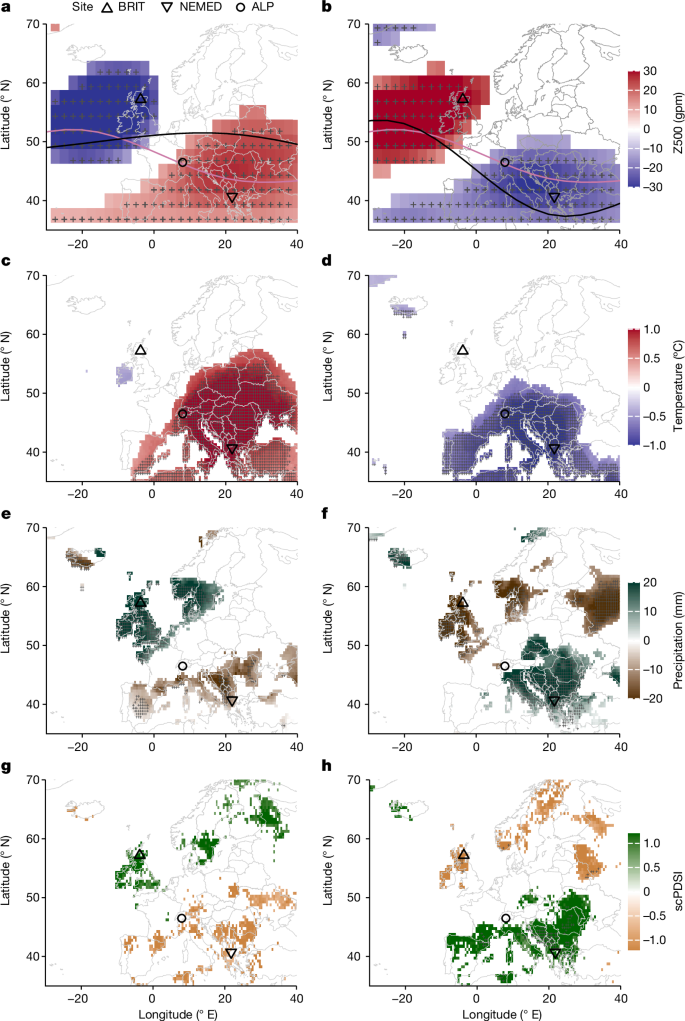2024-09-25 アリゾナ大学
<関連情報>
- https://news.arizona.edu/news/harvests-wildfires-epidemics-how-jet-stream-has-shaped-extreme-weather-europe-centuries
- https://www.nature.com/articles/s41586-024-07985-x
1300年以降のヨーロッパの気候と農業におけるジェット気流の影響 Jet stream controls on European climate and agriculture since 1300 ce
Guobao Xu,Ellie Broadman,Isabel Dorado-Liñán,Lara Klippel,Matthew Meko,Ulf Büntgen,Tom De Mil,Jan Esper,Björn Gunnarson,Claudia Hartl,Paul J. Krusic,Hans W. Linderholm,Fredrik C. Ljungqvist,Francis Ludlow,Momchil Panayotov,Andrea Seim,Rob Wilson,Diana Zamora-Reyes & Valerie Trouet
Nature Published:25 September 2024
DOI:https://doi.org/10.1038/s41586-024-07985-x

Abstract
The jet stream is an important dynamic driver of climate variability in the Northern Hemisphere mid-latitudes1,2,3. Modern variability in the position of summer jet stream latitude in the North Atlantic–European sector (EU JSL) promotes dipole patterns in air pressure, temperature, precipitation and drought between northwestern and southeastern Europe. EU JSL variability and its impacts on regional climatic extremes and societal events are poorly understood, particularly before anthropogenic warming. Based on three temperature-sensitive European tree-ring records, we develop a reconstruction of interannual summer EU JSL variability over the period 1300–2004 ce (R2 = 38.5%) and compare it to independent historical documented climatic and societal records, such as grape harvest, grain prices, plagues and human mortality. Here we show contrasting summer climate extremes associated with EU JSL variability back to 1300 ce as well as biophysical, economic and human demographic impacts, including wildfires and epidemics. In light of projections for altered jet stream behaviour and intensified climate extremes, our findings underscore the importance of considering EU JSL variability when evaluating amplified future climate risk.



